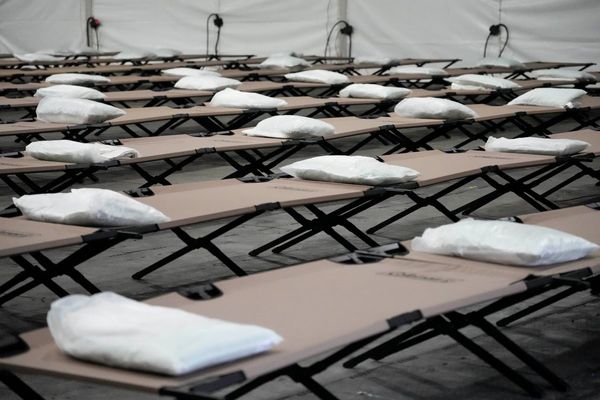
As the chair of the Early Pregnancy Loss Coalition, I was thrilled to see the federal budget announcement that for the first time miscarriage would receive dedicated, untied funding. I was equally delighted to see funding for endometriosis – and not only because people who experience endometriosis are more likely to have a miscarriage.
Pioneers like Guardian Australia journalist Gabrielle Jackson – author of the seminal book Pain and Prejudice – have drawn much-needed attention to misogyny in health. I hope I did the same with my own book on miscarriage, Hard to Bear.
From men being the default sex in almost all medical research, despite women having markedly different reproductive anatomy and physiology, to the gender gap in services rebates and pain management, to simply ignoring many of the medical needs of people with uteruses, this is well documented and internationally evidenced, and in my opinion, beyond debate.
But the side-effect of a lifetime of under funded care for women in almost every aspect of medicine, is that over time, the sector became the Hunger Games of funding.
Everyone wants the best for the issue or organisation they’re fighting for, and unfortunately, sometimes this means enemy lines are drawn across sectors, instead of invitations to collaborate.
This must end. Watching the achievements of the endometriosis and stillbirth lobbies through uniting their voices and advocating as sectors, rather than hundreds of individuals and small organisations, I realised that this was imperative to bringing change in the miscarriage space. I was met with enthusiasm and care.
But the concept of collaboration, cooperation and cheering on each other’s wins must be broader than that.
The federal budget released this week didn’t give us everything we wanted across women’s health – there are always deserving issues that miss out – but I do believe it continues the existing shift towards finally recognising the issues faced by women in seeking quality, appropriate, medical and health care. The assistant minister for health, Ged Kearney (a former nurse), has been a tenacious ally in this regard.
The budget’s miscarriage announcement offers the emergency funding we needed to support patients and their families right now, with grief support services and the capacity to build an awareness and education campaign to break down the silence, stigma and taboo.
In the endometriosis and sexual health space, better rebates for gynaecologists will mean better access for patients and ultimately longer appointments and better, safer care.
Funding to help tailored and flexible midwifery care will benefit all maternity patients, but also those who have experienced pregnancy loss.
The government will spend $3.4bn listing new medicines on the Pharmaceutical Benefits Scheme, including a breast cancer medication that will see per treatment cost cut from about $100,000 to $31.60.
Much-needed funding in the Aboriginal health space is crucial to closing the gap between Aboriginal women and other Australians.
People who experience family violence are also much more likely to experience early pregnancy loss, so funding for healthcare outreach in crisis accommodation is something I also see as win for the space I represent. The same goes for people who live in poverty or without a place to live. This was put into stark relief during the Covid-19 pandemic.
These are all social determinants of the care received or of the health issues they experience.
Another high risk for miscarriage is sexually transmitted diseases and related pelvic inflammatory disease. Chlamydia and gonorrhoea for instance can cause scarring, which in turn can raise your pregnancy and fertility risk profiles. Any funding in the area of sexual health is important for anyone advocating in the women’s health space. As is contraception.
Risk is always cumulative; there are multiple physical and social considerations feeding into a person’s health and wellbeing, especially when it comes to reproductive health. Treatment and good healthcare has to address these intersecting issues. Profiles in medicine are not affected by one issue; they are almost always affected by several. A doctor would (or should) never assume that a patient who walks into their office is there for a single-issue problem. It could be one. It could be two. It could be five. And it could be five separate issues or a combination of all intersecting to create a whole new challenge.
Different factors can combine to give you a likelihood of having one outcome or another – that’s the crux of a risk profile.
That’s why one of the challenges in women’s health is tackling the operation of silos. Women’s health sits on a Venn diagram, with patients in the centre, too often sitting across different issues that overlap.
I truly hope that this silo mentality can be set aside, but I am intrigued to see whether we can do this in relation to the budget funding of $1.4bn across 13 years for an updated Medical Research Future Fund. What research can benefit multiple cohorts of patients? What are we lacking in terms of basic knowledge gaps around women’s physiology? Biology? Hormones? How would this affect treatment for a variety of challenges?
The hunger games of funding won’t end. There will always be a degree of competition. And sadly, there will always be issues that don’t get the funding they want.
But we, as advocates and as women, can and must choose to lift each other up and see the benefit of all sectors rising together for the broader good of all.
• Isabelle Oderberg is a journalist, editor, writer and media professional. She is chair of the Early Pregnancy Loss Coalition. Her first book is titled Hard to Bear: Investigating the science and silence of miscarriage







